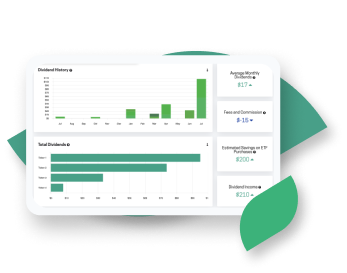Broadly speaking, there are six popular asset allocation ETFs available in Canada. There are offerings from both Vanguard and BlackRock (under the iShares name) for three different asset allocations:
- 60% bonds / 40% stocks
- 40% bonds / 60% stocks
- 20% bonds / 80% stocks
In this article, we will explore each of the 6 ETFs. The goal is to see whether it is more cost-efficient to use these ETFs versus signing up for Passiv to help you allocate your cash and rebalance your portfolio when needed.
The Pros and Cons of All-in-One ETFs
Before discussing each of Canada’s all-in-one ETFs individually, we wanted to take a moment to discuss the pros and cons of all-in-one ETFs as a broad category.
The obvious benefit of all-in-one ETFs is their simplicity. They allow you to regularly purchase units of a single ETF that gives you diversified exposure across asset classes and geographies using a predetermined asset allocation.
With that said, all-in-one ETFs also have their downsides.
For one, they are rigid. Owning an all-in-one ETF means that you have no ability to customize your investment portfolio.
Secondly, all-in-one ETFs come with embedded conflicts of interest. You can be guaranteed that if Vanguard launches an all-in-what ETF, then its constituents funds will also be issued by Vanguard - even if they are not the cheapest or best in this category.
Moving forward, we’ll see that building your own model portfolio using Passiv is much cheaper than existing all-in-one portfolios. Keep in mind that there are other advantages, as just discussed.
Self-Rebalancing ETF #1: Vanguard Conservative ETF Portfolio (VCNS)
VCNS is Vanguard’s solution for a self-rebalancing 60% bonds and 40% stocks portfolio. The ETF owns the following underlying funds as of December 31, 2019:
- Vanguard Canadian Aggregate Bond Index ETF (VAB): 35.3%
- Vanguard US Total Market Index ETF (VTI): 15.9%
- Vanguard Global ex-US Aggregate Bond Index ETF CAD-hedged (VBG): 13.2%
- Vanguard FTSE Canada All Cap Index ETF (VCN): 12.0%
- Vanguard US Aggregate Bond Index ETF CAD-hedged (VBU): 11.5%
- Vanguard FTSE Developed All Cap ex North America Index ETF (VIU): 9.0%
- Vanguard FTSE Emerging Markets All Cap Index ETF (VEE): 3.1%
VCNS charges a management expense ratio of 0.25%. The management expense ratios of the underlying funds are:
- Vanguard Canadian Aggregate Bond Index ETF (VAB): 0.09%
- Vanguard US Total Market Index ETF (VTI): 0.03%
- Vanguard Global ex-US Aggregate Bond Index ETF CAD-hedged (VBG): 0.38%
- Vanguard FTSE Canada All Cap Index ETF (VCN): 0.06%
- Vanguard US Aggregate Bond Index ETF CAD-hedged (VBU): 0.22%
- Vanguard FTSE Developed All Cap ex North America Index ETF (VIU): 0.23%
- Vanguard FTSE Emerging Markets All Cap Index ETF (VEE): 0.24%
If you were to bypass the VCNS ETF and invest in a model portfolio using the same weights using Passiv Community, you would reduce your total MER to 0.15% - down 40% from the 0.25% charged by VCNS itself. Moreover, it would be easier to customize your weightings over time without having to sell VCNS, realize a capital gain, and buy a different ETF if your investment objectives change.
Self-Rebalancing ETF #2: iShares Core Conservative Balanced ETF Portfolio (XCNS)
XCNS is BlackRock’s solution for a self-rebalancing 60% bonds and 40% stocks portfolio. The ETF’s MER and holdings are unavailable at this time because it is so new. For evidence of this, consider the fund’s fact sheet.
With that said, it is reasonable to assume that the savings from investing in XCNS’ constituent funds using Passiv to rebalance would be similar to the 40% discount from employing the same strategy in the Vanguard equivalent (VCNS), discussed earlier in this article.
Self-Rebalancing ETF #3: Vanguard Balanced ETF Portfolio (VBAL)
VBAL is Vanguard’s solution for a self-rebalancing 40% bonds and 60% stocks portfolio. The ETF owns the following underlying funds as of December 31, 2019:
- Vanguard US Total Market Index ETF (VTI): 25.0%
- Vanguard Canadian Aggregate Bond Index ETF (VAB): 22.9%
- Vanguard FTSE Canada All Cap Index ETF (VCN): 18.0%
- Vanguard FTSE Developed All Cap ex North America Index ETF (VIU): 13.6%
- Vanguard Global ex-US Aggregate Bond Index ETF CAD-hedged (VBG): 9.0%
- Vanguard US Aggregate Bond Index ETF CAD-hedged (VBU): 7.3%
- Vanguard FTSE Emerging Markets All Cap Index ETF (VEE): 4.2%
VBAL charges a management expense ratio of 0.25% - the same as VCNS, the other Vanguard fund discussed earlier in this post. The management expense ratios of the underlying funds are:
- Vanguard US Total Market Index ETF (VTI): 0.03%
- Vanguard Canadian Aggregate Bond Index ETF (VAB): 0.09%
- Vanguard FTSE Canada All Cap Index ETF (VCN): 0.06%
- Vanguard FTSE Developed All Cap ex North America Index ETF (VIU): 0.23%
- Vanguard Global ex-US Aggregate Bond Index ETF CAD-hedged (VBG): 0.38%
- Vanguard US Aggregate Bond Index ETF CAD-hedged (VBU): 0.22%
- Vanguard FTSE Emerging Markets All Cap Index ETF (VEE): 0.24%
If you were to bypass the VBAL ETF and invest in a model portfolio using the same weights using Passiv Community, you would reduce your total MER to 0.13% - down 48% from the 0.25% charged by VBAL itself.
Again, you would also have the additional benefit of being able to customize your asset allocation over time without selling the all-in-one ETF and realizing its associated capital gains.
Self-Rebalancing ETF #4: iShares Core Balanced ETF Portfolio (XBAL)
XBAL is BlackRock’s solution for a self-rebalancing 40% bonds and 60% stocks portfolio. Unlike the first BlackRock fund discussed in this article, its fact sheet is comprehensive and actually contains useful information about its management expense ratio and fund holdings.
To start, let’s investigate XBAL’s holdings. The fund currently holds the following securities (as of January 16th, 2020):
- iShares S&P 1500 Index Fund (ITOT): 28.4%
- iShares Core Canadian Universe Bond Index ETF (XBB): 24.8%
- iShares Core S&P/TSX Capped Composite Index ETF (XIC): 15.5%
- iShares Core MSCI EAFE IMI Index ETF (XEF): 14.9%
- iShares Core Canadian Short Term Corporate + Maple Bond Index ETF (XSH): 5.8%
- iShares Broad USD Investment Grade Corporate Bond ETF (USIG): 3.9%
- iShares U.S. Treasury Bond ETF (GOVT): 3.7%
- iShares Core MSCI Emerging Markets ETF (IEMG): 2.9%
The XBAL ETF charges a management expense ratio of 0.20%. The management expense ratios of the funds it holds are listed below:
- iShares S&P 1500 Index Fund (ITOT): 0.03%
- iShares Core Canadian Universe Bond Index ETF (XBB): 0.10%
- iShares Core S&P/TSX Capped Composite Index ETF (XIC): 0.06%
- iShares Core MSCI EAFE IMI Index ETF (XEF): 0.22%
- iShares Core Canadian Short Term Corporate + Maple Bond Index ETF (XSH): 0.10%
- iShares Broad USD Investment Grade Corporate Bond ETF (USIG): 0.06%
- iShares U.S. Treasury Bond ETF (GOVT): 0.15%
- iShares Core MSCI Emerging Markets ETF (IEMG): 0.14%
If you were to bypass the XBAL ETF and invest in a model portfolio using the same weights using Passiv Community, you would reduce your total MER to 0.09% - down more than 50% from the 0.20% charged by XBAL itself. Again, building your own model portfolio using Passiv and rebalancing using our email alerts would save you a significant amount on investment fees over time.
Self-Rebalancing ETF #5: Vanguard Growth ETF Portfolio (VGRO)
VGRO is Vanguard’s solution for a self-rebalancing 20% bonds and 80% stocks portfolio. The ETF owns the following underlying funds as of December 31, 2019:
- Vanguard US Total Market Index ETF (VTI): 32.1%
- Vanguard FTSE Canada All Cap Index ETF (VCN): 24.0%
- Vanguard FTSE Developed All Cap ex North America Index ETF (VIU): 17.9%
- Vanguard Canadian Aggregate Bond Index ETF (VAB): 11.7%
- Vanguard FTSE Emerging Markets All Cap Index ETF (VEE): 6.1%
- Vanguard Global ex-US Aggregate Bond Index ETF CAD-hedged (VBG): 4.4%
- Vanguard US Aggregate Bond Index ETF CAD-hedged (VBU): 3.8%
The VGRO ETF charges a management expense ratio of 0.25%. The management expense ratios of the funds it holds are listed below (weightings are as of December 31, 2019):
- Vanguard US Total Market Index ETF (VTI): 0.03%
- Vanguard FTSE Canada All Cap Index ETF (VCN): 0.06%
- Vanguard FTSE Developed All Cap ex North America Index ETF (VIU): 0.23%
- Vanguard Canadian Aggregate Bond Index ETF (VAB): 0.09%
- Vanguard FTSE Emerging Markets All Cap Index ETF (VEE): 0.24%
- Vanguard Global ex-US Aggregate Bond Index ETF CAD-hedged (VBG): 0.38%
- Vanguard US Aggregate Bond Index ETF CAD-hedged (VBU): 0.22%
If you were to bypass the VGRO ETF and invest in a model portfolio using the same weights using Passiv Community, you would reduce your total MER to 0.12% - down more than 50% from the 0.25% charged by VGRO itself.
Self-Rebalancing ETF #6: iShares Core Growth ETF Portfolio (XGRO)
XGRO is BlackRock’s solution for a self-rebalancing 20% bonds and 80% stocks portfolio. The fund currently holds the following securities (as of January 16th, 2020):
- iShares S&P 1500 Index Fund (ITOT): 37.1%
- iShares Core S&P/TSX Capped Composite Index ETF (XIC): 19.9%
- iShares Core MSCI EAFE IMI Index ETF (XEF): 19.6%
- iShares Core Canadian Universe Bond Index ETF (XBB): 12.6%
- iShares Core MSCI Emerging Markets ETF (IEMG): 3.9%
- iShares Core Canadian Short Term Corporate + Maple Bond Index ETF (XSH): 3.0%
- iShares Broad USD Investment Grade Corporate Bond ETF (USIG): 2.0%
- iShares U.S. Treasury Bond ETF (GOVT): 1.9%
The XGRO ETF charges a management expense ratio of 0.20%. The management expense ratios of the funds it holds are listed below:
- iShares S&P 1500 Index Fund (ITOT): 0.03%
- iShares Core S&P/TSX Capped Composite Index ETF (XIC): 0.06%
- iShares Core MSCI EAFE IMI Index ETF (XEF): 0.22%
- iShares Core Canadian Universe Bond Index ETF (XBB): 0.10%
- iShares Core MSCI Emerging Markets ETF (IEMG): 0.14%
- iShares Core Canadian Short Term Corporate + Maple Bond Index ETF (XSH): 0.10%
- iShares Broad USD Investment Grade Corporate Bond ETF (USIG): 0.06%
- iShares U.S. Treasury Bond ETF (GOVT): 0.15%
If you were to bypass the XGRO ETF and invest in a model portfolio using the same weights using Passiv Community, you would reduce your total MER to 0.09% - down more than 50% from the 0.20% charged by XGRO itself.
Summary & Final Thoughts
While all-in-one ETFs are an excellent idea in theory, their implementation has been less than ideal. ETF issuers Vanguard and BlackRock are charging investors an extra layer of fees for very simple periodic rebalancing.
In this article, we demonstrated how implementing the same weightings as the 6 popular all-in-one ETFs can both save you money and provide for further customization. The cost savings are detailed below for the various bond/stock portfolios:
- 60/40: 10 bps for Vanguard, BlackRock data unavailable
- 40/60: 12 bps for Vanguard, 11 bps for BlackRock
- 20/80: 13 bps for Vanguard, 11 bps for BlackRock

Ready to try Passiv
If you're interested in savings on management fees, try Passiv and automate your portfolio management now.
Get StartedWritten by Nick McCullum


